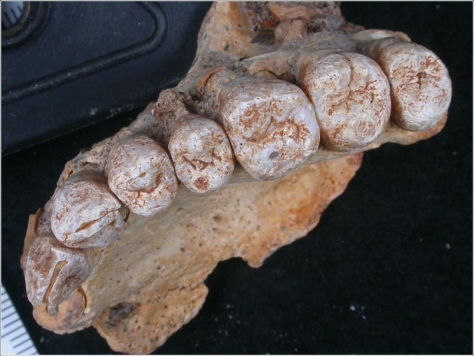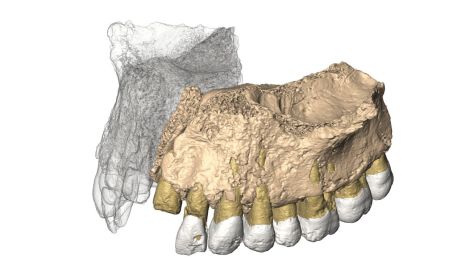NewsNext Previous
Discovered the earliest modern human out of Africa
It is a left side of an adult upper jawbone including most of the dentition was found at Misliya Cave in Israel
In this research, Carlos Lorenzo, IPHES researcher and professor at URV, has participated in the paleoanthropological study of the human remains
The history of our own species – Homo sapiens – is longer and probably more complicated than scientists had previously believed. While Africa is widely accepted as the place of origin of the first modern humans, there was no evidence that these people moved out of Africa prior to between 120,000 and 90,000 years ago. Now an international team of researchers has described the earliest modern human fossil ever found outside of Africa. The left side of an adult upper jawbone including most of the dentition was found at Misliya Cave in Israel, one of a series of prehistoric cave sites located on Mount Carmel. In this research, Carlos Lorenzo, IPHES researcher and professor at Rovira i Virgili University (URV), has participated in the paleoanthropological study of the human fossil.
 The left hemi-maxilla with teeth
The left hemi-maxilla with teeth
The team applied several dating techniques to archaeological materials from the site and the human fossil itself to obtain an age. The results suggest the fossil dates to between 177,000 and 194,000 years, pushing back the first modern human migration out of Africa by roughly 60,000 years. In addition, the Misliya fossil is about the same age as other early Homo sapiens fossils from two sites in East Africa.
To establish what species the Misliya fossil represents, the researchers relied on multiple approaches to analyze the fossil itself. The multidisciplinary team applied classic anthropological measurements on the jawbone and teeth, as well as micro-Computed Tomography scans to study the inner anatomy and compare the shape using 3D virtual models. The comparison with African, European and Asian hominin fossils and with recent human populations showed that the Misliya fossil is unequivocally an early modern human.
 Reconstructed maxilla
Reconstructed maxilla
Luckily, the roof of Misliya Cave collapsed about 160,000 years ago and protected the human fossil and the archaeological artifacts buried in the sediments until the present day. The rich archaeological evidence reveals that the inhabitants of Misliya cave were capable hunters of large game species such as aurochs, persian fallow deer and gazelles, they controlled the production of fire in hearths, made a wide use of plants and produced an Early Middle Paleolithic stone tool kit, employing sophisticated innovative techniques, similar to those found with the earliest modern humans in Africa.
While older fossils related to modern humans have been found in Northwest Africa, the timing and routes of modern human migration out of Africa are key issues for understanding the evolution of our own species. The region of the Middle East represents a major corridor for hominin migrations during the Pleistocene and has been occupied at different times by modern humans, Neandertals, and even earlier human species. This new discovery from Misliya Cave opens the door to demographic replacement or genetic admixture between modern humans and other local populations much earlier than previously thought. Indeed, the evidence from Misliya is consistent with recent suggestions based on ancient DNA for an earlier migration, prior to 220,000 years ago, of modern humans out of Africa. Several recent archaeological and fossil discoveries in Asia are also pushing back the first appearance of modern humans in the region and, by implication, the migration out of Africa.
For further information:
Hershkovitz, I., Weber, G.W., Quam, R., Duval, M., Grün, R., Kinsley, L., Ayalon, A., Bar-Matthews, M., Valladas, H., Mercier, N., Arsuaga, J.L., Martinón-Torres, M., Bermúdez de Castro, J.M., Fornai, C., Martín-Francés, L., Sarig, R., May, H., Krenn, V.A., Slon, V., Rodríguez, L., García, R., Lrenzo, C., Carretero, J.M., Frumkin, A., Shahack-Gross, R., Bar-Yosef Mayer, D.E., Cui, Y., Wu, X., Peled, N., Groman-Yaroslavski, I., Weissbrod, L., Yeshurun, R., Tsatskin, A., Zaidner, Y. & Weinstein-Evron, M. (2018). “The earliest modern humans outside Africa”. Science, published online 26th January 2018.


